HIGHLIGHTS INCLUDE:
- Exploring the Naankuse Wildlife Sanctuary
- Learning about the starry skies with the Bushmen
- Tracking the elusive Black Rhinos
- Searching for the “Little 5” in the Living Desert
- Visiting Etosha National Park – one of the best parks in Southern Africa
- Climbing up a dune close to Sossusvlei to appreciate the vast desert
Day 1: Windhoek – Arrival Day
Upon arrival at the airport you will be collected and transferred to the Na’an Ku Se Wildlife Sanctuary, a private institution renowned for its large carnivore conservation programs and the associated foundation’s support for the local communities and wildlife. There will be no activities planned on the first day, it being arrival day. The lodge at Na’an Ku Se is ideally located on the private game reserve and offers excellent game viewing and accommodation.
Overnight is in twin/double chalets with dinner in the restaurant.
Meals: -/-/D
Accommodation: Ku Se Lodge
Day 2: Windhoek – Carnivore Feeding
Join an exciting and informative full carnivore feeding tour for a unique wildlife experience. During the course of this tour you will visit and feed many animals including lion, leopard, wild dogs, baboons, caracal and cheetahs – hear their stories about how they came to N/a’an ku sê, learn more about their behaviour in the wild and see them being fed by the experienced guides. This is an excellent opportunity for fantastic up close photographs.
You return to the lodge for lunch and have the afternoon free to enjoy an optional activity or just relax by the swimming pool. After dinner, there’s the chance to listen to Bushman stories of the stars. This is a superb introduction to astronomy and a great way to experience the Namibian bush at night. Away from city lights, the breathtaking beauty of the evening sky will open up and the experienced San Bushman guide will lead you through the current constellations and the traditional Bushman tales surrounding them (weather permitting).
Overnight in twin/double chalets with dinner in the restaurant and lunch included.
Meals: B/L/D
Accommodation: Ku Se Lodge
Day 3 & 4: Namib Naukluft Park
This morning you are collected by your guide and drive through the capital city of Windhoek to the amazing Namib Naukluft Park, enjoying the beautiful scenery en route. Our camp is located within the park in the stunning landscape with mountains to the east and dunes to the west. Upon arrival you may choose to relax by the pool and if time permits we visit nearby Elim’s Dune for sunset (this is only possible if we are based inside the park).
It’s a pre-dawn departure from camp the following morning as we drive to the 2×4 car park and from here take the shuttle to the sand dune sea. Enjoy the changing colours of the desert – a truly unforgettable experience. Climbing up a dune close to Sossusvlei to appreciate the immense scale of the region is remarkable, then it’s across to Dead Vlei with its huge expanse of bleached cracked clay and skeletal camel thorn trees scattered around, contrasting with a backdrop of huge orange-red dunes.
We enjoy a mid morning brunch after exploring this dramatic and desolate landscape before returning to camp for a swim and this afternoon explore nearby Sesriem Canyon on foot. Enjoy another spectacular sunset surrounded by this colourful desert and sleep under the bright stars of the southern hemisphere.
Overnight camping with meals prepared by guide with camp assistant
Sesriem Canyon: At the entry to Sossusvlei is Sesriem Canyon, where centuries of erosion have incised a narrow gorge about 1km in length. At the foot of the gorge, which plunges down 30 to 40 m, are pools that become replenished after good rains. Sesriem derives its name from the time when early pioneers tied six lengths of rawhide thongs (reins) together and secured to a bucket to draw water from the pools
Sossusvlei: Sossusvlei is a clay pan set amid monstrous piles of sand known as star dunes that reach the height of a 70storey skyscraper and rank among the tallest dunes on earth. A deathly white against red sands, the pan is the endpoint of a usually dry river, Tsauchab, in the interior of the Great Sand Sea. The river course rises south of the Naukluft Mountains in the Great escarpment. It penetrates the sand sea for some 55km before it finally peters out about the same distance from the Atlantic. Until dunes stopped it in its tracks 60 000 years ago, the Tsauchab reached the sea, as ephemeral rivers still do in the northern half of the Namib. Sand-locked pans to the west were endpoints before Sossusvlei. The dunes in the vicinity of Sossusvlei get to be as high as 220m. They look even higher when their base rests on an elevated surface such as a river terrace. Indeed one of them that lie beside the Tsauchab rises 325m above the valley floor. Once a decade or so rainfall over the escarpment is sufficient to bring the river down in flood and fill the pan. On such occasions the mirror images of dunes and gnarled trees around the pan are reflected in the water.
Meals: B/L/D
Accommodation: Camping – Sesriem
Day 5: Swakopmund
Depart from camp after breakfast stopping at the quaint town of Solitaire before continuing through the desert with endless views across the pastel-coloured gravel plains to the port town of Walvis Bay. We visit the lagoon, a protected RAMSAR wetland site, where we may see the many species of birds including greater and lesser flamingos, pelicans, avocets, plovers and the endemic Damara tern before a short stop at the salt farm. We continue onto Swakopmund, full of historic buildings and where you can take part in optional activities this afternoon or just relax.
Overnight in comfortable twin/double rooms with en-suite bathroom located close to the town centre. Laundry facilities are available here.
Swakopmund Town: Swakopmund is a town with an air of enchantment about it, as if the ornate buildings of the old quarter and the lush greenery of the seafront were somehow spirited away from their proper setting, only to be left without rhyme or reason in an African desert. Beyond the last row of houses the desert is devoid of vegetation except for low bushes. On a slight rise above the seashore, the town is exposed to both the Atlantic and the Namib, with gravel plains to the north and east. It stands on the north bank of a river course that is nearly always dry. A narrow belt of sand dunes, outriders of the Great Sand Sea to the south, comes to a halt on the opposite bank. A bare plain beside a rough sea and dry river is hardly a prime position for a holiday resort. In fact the town was never meant to be a resort, but became one against all the odds. It was established as a harbour town. Swakopmund had its beginning as a landing station in 1892 when the Imperial Navy erected beacons on the site. Initially cargo and passengers were rowed ashore in surfboats from steamers anchored offshore. Once a concrete Mole or breakwater had been built it became possible to use tugs and barges instead.
Meals: B/L/-
Accommodation: Hotel a la Mer
Day 6: Swakopmund – Living Desert
This morning we join Tommy, a local celebrity, (or one of his team) as he brings the desert to life on the “Living Desert Tour” and look for the “Little 5”. The tour, originally developed by Tommy himself in the 1990’s, is a unique 4×4 adventure drive through the dunes outside Swakopmund. Just the drive in the dunes is an amazing experience, but you’ll be shown a lot more than sand. The tour takes you from the vegetated, life-rich eastern side of the dunes, right through the dunes to the Atlantic Ocean on the western side of the dune belt introducing you to some of the fascinating, hidden life in this apparently barren landscape that is part of the Namib Desert.
Here you can find creatures endemic to the Namib: the sidewinder (Peringuey’s adder), the Palmato gecko with its transparent skin and beautiful colours – and dig into the dune side to find this nocturnal desert-dweller. Track the large Namaqua chameleon, and watch it enjoy brunch. After the trip return to town where you’re free to explore this afternoon. The Namibian National Aquarium is located here, alongside the national fisheries research centre. It offers a glimpse into the rich underwater world of the Namibian coast. There is a beach, but you’ll want to stay planted firmly on it as water temperatures are quite chilly (hence the profusion of life).
Enjoy dinner on your own at one of many restaurants in the downtown area of Swakopmund. Overnight in comfortable twin/double rooms on a bed and breakfast basis, lunch and dinner at client’s expense
Meals: B/-/-
Accommodation: Hotel a la Mer
Day 7: Swakopmund – Marine Cruise
An early morning as your guide drives you to the Walvis Bay jetty to join marine cruise, which will start around 08h45am and once aboard depart from the Walvis Bay Waterfront and continue on your route into the beautiful bay area, which holds more splendour than at first can be seen – a shipwreck, lighthouse, different bird species, seals and an abundance of marine life, are just some of the attractions to mention.
In the bay area, the catamaran will move past the oyster lines. Here your guide will share more information with you about Walvis Bay cultivated oysters. Included in the tour is the tasting of these delicacies. The journey proceeds to the ever-growing Pelican Point to achieve a closer look at the lighthouse. The old supply railway spoors can still be seen from the years when the lighthouse was occupied by the coast guards. Moving around the point, three different types of dolphins may be encountered, namely, the heavyside dolphins – which are the most important, as they are endemic to the coast of Namibia, dusky dolphins and Atlantic bottlenose dolphins. All this is experienced while comfortably relaxing in the saloon, on the trampolines or on deck, whilst enjoying a glass of sparkling wine and trade-mark snacks. You have the afternoon free to enjoy optional activities on offer or just to relax.
Overnight in twin/double rooms with a light lunch included on the board. Dinner will be at own expense.
Meals: B/L/-
Accommodation: Hotel a la Mer
Day 8: Save the Rhino Trust – Damaraland
We leave after breakfast and head north along the Skeleton Coast past the gravel plains and harsh desert to one side and the ocean crashing down onto the shore the other. We can stop at Cape Cross, home of thousands of Cape fur seals during the breeding season over 100,000 are crammed onto the beach fighting for space. We turn inland and drive to either the Mai Go Ha Camp, which is the main base camp for Save the Rhino Trust. Located near Palmwag Lodge along the main gravel road between Bergsig and Sesfontein, it serves as the logistical base for the majority of the staff while in the field.
With its strategic base near a tourism lodge and main tourism route, Mai Go Ha also contains a small information centre showcasing SRT’s work over the years and some black rhino information for tourists. It also serves as the main training centre for SRT courses and has seen many local Damara and Herero men and women, as well as national and international students, pass through its doors to acquire new skills, knowledge and appreciation about Kunene’s black rhinos. From Mai Go Ha, tracking teams have relatively quick access to the central range of the Kunene rhinos. There is a small curio shop at the centre that sells items made by SRT staff, as well as SRT t-shirts, caps and other items. Alternatively, we will camp at Palmwag Lodge campsite, there’s a bar, swimming pool and a floodlit waterhole – it’s not unusual for elephant to wander through camp.
Save the Rhino Trust: Based in the Kunene Region in Namibia’s northwest, Save the Rhino Trust Namibia (SRT) is a non-governmental organisation working to protect the area’s population of desert-adapted black rhino (Diceros bicornis bicornis) – the only truly free-ranging population in the world! It was founded in 1982 by a group of local conservationists concerned about the decreasing number of rhino due to poaching. Save the Rhino Trust Namibia works closely with the Save the Rhino International in the UK, which supports a number of rhino conservation programmes in both Africa and Asia? Living outside of a fenced protected area, the Kunene’s rhinos are considered to be the largest truly free-ranging black rhino population left in the world. These rhino are protected and monitored by staff from SRT, in conjunction with Namibia’s Ministry of Environment and Tourism (MET) and local communities. Currently, a number of dedicated SRT patrolling and monitoring teams cover the core rhino range area of over 25,000 km² (6.7 million acres). These teams deter poaching and record valuable data on individual rhino, such as age, sex, rhino horn size and shape, ear notches and condition. This information is shared with MET who maintain the Kunene Black Rhino database – one of the longest-running and most comprehensive databases on black rhino in the world. This data helps to inform biological management decisions on Namibia’s black rhino population.
Overnight camping with meals prepared by guide and camp assistant.
Meals: B/L/D
Accommodation: Palmwag Lodge Campsite or Mai Go Ha Camp
Day 9:Save the Rhino Trust – Damaraland
After breakfast, we visit Save the Rhino Trust, an organization that has been protecting wild rhino population in Damaraland since the early 1980’s. Their base camp at Mai Go Ha (Standing By) has a visitor’s centre where you will learn about their work in protecting and managing the world’s last remaining wild population of rhino. While we will also drive to their nearby Palmwag Lodge where we join a guided walk to Two Palms, this is approx. 3 hour guided walk and is taken into the concession area, with the lodges very own, well-trained, experienced guides. Depending on availability, it may be possible for one of the conservationists to give a presentation to the group.
Overnight camping with meals prepared by guide and camp assistant.
Accommodation: Palmwag Lodge Campsite or Mai Go Ha Camp
Day 10 & 11: Northern Damaraland & Rhino Tracking
We continue to the heart of Northern Damaraland and onto Grootberg Lodge. En-route we may backtrack a little to visit Twyfelfontein and visit the famous rock engravings with a local guide. Arriving at the lodge during the afternoon, we leave our vehicle at the base and transfer to the top of the plateau to the lodge- the chalets and main area has amazing views over the valley. The following morning depart at 7.00am after an early breakfast. The guide, along with the game trackers will take the guests in an open 4×4 game vehicle down to the Klip River. They will track the rhinos from the vehicle using telemetry as transmitters have been inserted into the animals’ horns for monitoring purposes. Part of the tracking will take place on foot, with the possibility of between 1 to 3 hours walk at the most. At lunch time there’s a stop near the springs and enjoy nature. It’s almost a full day activity going along bumpy roads and walking in rocky terrain, so not advisable for the faint-hearted or those with injuries such as a bad back – please note that sightings are not guaranteed.
Overnight in twin bedded chalets with meals in the restaurant – though lunch on day 11 is served en-route by guide and a packed lunch is taken on the rhino tracking.
Grootberg Lodge – is a landmark in Namibia and the tourism industry as it is the first middle-market establishment in the country that is 100% owned by the conservancy. The European Union funded the project through the Ministry of Environment and Tourism’s Development Programme with a donation of N$4.5 million to develop the 12-room lodge. The purpose of the Grootberg Lodge is not only to offer a professional service, great surroundings, extremely good food, well-trained guides and exceptionally good local management but, at the same time, to benefit the local community thanks to the revenues generated by the Lodge. While sustainability of the Conservancy is a primary objective which the lodge contribute towards, there are additional benefits such as increasing direct job opportunities in a poorly developed area; supporting marginal people with projects such as building schools, clinics, creating a community kitchen for the elderly and vulnerable groups and award bursaries to promising pupils with the proceeds of the lodge. Another important aim is to reduce the animal/human conflict in this community so that locals will be more tolerant of the lions, cheetahs and elephants and give them a value from a tourism perspective. The success of the lodge is critical to demonstrate the value of the land-use which the conservancy is promoting. The exclusive development area needs to show the value in setting aside “core” areas for tourism and biodiversity conservation
Meals: B/L/D
Accommodation: Grootberg Lodge
Day 12-14: Etosha National Park
Onto Etosha National Park our base for the next 3nights (subject to availability). En-route we will stop at Toko Lodge, where we visit a Himba village before continuing to Etosha, entering the park through the western gate, an area recently opened and traditionally used by researchers and Namibian tour operators only. It also attracts other species you will not see in other areas of the park such as Hartmanns mountain zebra and baboon. Days will be spent game driving and searching for the many species of game on offer in the park and after sunset you can enjoy the floodlit waterholes. The active waterhole attracts various species of game such as black rhino, elephant and leopard. This park is recognized as one of the best game parks in Southern Africa for the numbers and various species of game as well as the interesting geology.
Etosha National Park: With translations such as “Great, White Place”, “Place of Mirages” and “Land of Dry Water”, it’s no wonder Etosha has a certain mystery around it. The Etosha Pan, a vast shallow depression of around 110km from east to west and 60km from south to north is likely to be the remains of a large inland lake that flowed from the Angolan highlands. However, continental uplift changed the slope of the land and direction towards the Atlantic. Slowly, the lake dried – if the lake existed today, it would be the third largest in the world. Etosha is the largest of the pans, 4 760 km in extent, or about half the size of Lebanon. It is nowadays filled with water only when sufficient rain falls to the north in Angola to induce floods to flow southward along the Cuvelai drainage system. Etosha is open through out the year and is accessible with the tarred roads via the Andersson Gate in the central southern section and the Von Lindequist Gate in the east. Each of Etosha’s three resorts, Okaukuejo in the centre of the park, Namutoni in the east and Halali halfway between the two, has its own distinctive character and atmosphere. Each has a floodlit waterhole where wildlife can be viewed throughout the day and night.
Meals: B/L/D
Accommodation:
Day 12 Olifantrus – camping
Day 13 Okaukuejo – camping
Day 14 Namutoni – camping
Day 15: Waterberg Plateau
Enjoy a final game drive before driving south to Waterberg Plateau Park, a compacted Etjo sandstone formation, some 250m high and formed around 180-200m years ago it’s the remnant of a much larger plateau that covered the region. There are a number of springs at the base and this provides a vital water source.
Waterberg Plateau Park: Initially created as a sanctuary for rare and endangered species the region is quite unique in Namibia. Here, the red “Etjo” sandstone rises majestically above the surrounding plains and for those that head to the top of the plateau it offers terrific views across the veldt. It’s approximately 48km long by 8-16km wide and the vegetation changes from acacia savannah to lush green, almost sub-tropical woodlands filled with fig, lead wood, silver terminalia and a host of other trees. Visitors can enjoy game drives into the park to search for the variety of game such as rhino, eland, giraffe, oryx, kudu, baboon, hyena as well as leopard and cheetah and many other species. It is also worth remembering this site historically – bushman were the first inhabitants, followed by the Damara during the 19th century and then Hereros. The explorers Anderson and Galton were the first Europeans reported to visit Waterberg. In 1873 a Rhenish mission station was erected but destroyed just 7 years later during the Khoikhoi and Herero water, to be later rebuilt (there is little remaining these days). However, during 1904 there was a Herero uprising against the German forces and many people lost their lives or fled into the desert for safety. The battle of Waterberg is commemorated during August at the cemetery near the battle site where more than 70 Schutztruppe lie buried.
Overnight camping with meals prepared by guide and camp assistant (BLD)
Meals: B/L/D
Accommodation: Bernabe de la Bat
Day 16: Windhoek – Departure Day
We return to Windhoek where you are dropped off at the airport – no flights prior to mid/late afternoon (B)
Meals: B/-/-
PLEASE NOTE: This itinerary is subject to change. Although we always do our best to stick to the itinerary, due to the ever changing nature of Namibia, activities, restaurants, hotels, campsites, and visits are subject to change due to forces beyond our control.
PASSPORTS: Must be valid for at least 6 months upon return date to your home country. Proper documentation is the responsibility of each traveller.
IMPORTANT
Namibia is an incredible country to visit but please remember that we are in Africa and that not all standards are the same as you would get in Canada or other first world countries. To the majority of our clients, that is part of the appeal of travelling to destinations such as ours. If you are not comfortable with new challenges then you may wish to consider other companies or destinations. Please also note that due to the location of destinations, some long days are inevitable – you’ll travel on gravel roads which can vary in quality depending on the season and maintenance work carried out – we follow only well-defined roads. Note that for safety we do not travel after sunset – please do not expect your guide to do so
Money: The Namibian dollar is tied permanently against the South African rand on a 1/1 basis so you are able to check the current exchange rate against your local currency but please note that Namibian dollars are not regarded as an international currency and cannot be purchased outside of the country, therefore if bringing money into the country then you’ll receive SA rand. Both Namibian dollars and South African rand are legal currencies in Namibia. Generally, credit card facilities are accepted in the lodges and ATM’s are available in towns, however, we recommend you carry some cash with you in case a machine is out of order. Travellers’ cheques can only be exchanged in major towns and it is often a time consuming and costly process so we do not recommend carrying them with you. We recommend you bring South African rand with you or exchange at the airports prior to landing in Windhoek to avoid any unnecessary delays upon arrival or needing to carry large sums of money and passports around the city. It is customary to tip in Namibia, usually, around 10% at restaurants. Your guide can be tipped at your discretion if you feel he/she has done a superb job – we recommend N$40-50/person/day
Safety: As with every destination safety tips needs to be adhered to; we strongly recommend you use a safe in a hotel/lodge or lock up your valuables when you are not in the room; when in a vehicle do not leave valuables on display but tucked away and out of sight. It is also better to have copies of passports, money; cards etc split between travellers so if anything unexpected happens and a bag is lost or stolen then other funds/cards are available, you may also wish to consider using a money belt/neck wallet. We suggest you leave valuable jewellery at home – you won’t need it while travelling. A padlock for your luggage is also recommended
Dietary: We can assist with booking of various dietary requirements or food allergies but we appreciate your details when you book with us and we will advise the appropriate lodges. Please be aware that the choice and options may not be as great as your home country.
Weather: Please note that in winter evenings and nights in particular can be very cold we recommend layered clothing – day time temps can be 25°C so t-shirts and shorts is great for then but thermals are very useful for evenings/night. Summer temperatures can exceed 40°C but also bring our rainy season so a lightweight rain jacket is handy, as with most places layering is the most recommended way of clothing – please ensure you pack your clothes in plastic bags and ensure cameras/electrical equipment is suitably protected
Climate: The African sun is very strong. Please use a factor 30 sunscreen and wear a hat. You should drink at least 3 litres of water per day to avoid dehydration. It can also get very cold during winter months on this route
Electrical: plugs are 220V and are 3 pin (round pin as opposed to square pin). Adaptors can be purchased in Windhoek and most international airports; they are the same as South Africa if you are shopping in home country or at airport. Some lodges will also offer 2pin sockets or adaptors but please do not rely on this, it is much better to bring your own. It is possible to re-charge batteries at most lodges but clients must be responsible for security of their possessions.
Insurance: It is essential that you purchase comprehensive personal travel insurance before you embark on your holiday, medical insurance is insufficient. Travel insurance is for your own protection and should include evacuation; we also recommend full cover for baggage loss etc and consider it to be an essential part of modern international travel. Contact nicola@finisterra.ca for insurance.
If you have credit card insurance – please contact your bank for these details prior to arriving in-country. If you are uncertain whether this is enough please contact us when you book to ensure you have adequate cover
Health: Namibia is a low risk malarial destination but we recommend that seek professional medical advice to enable you to make decisions on personal malaria protection. Note that Etosha is an official malarial area (low risk) so please discuss with your doctor and obtain any necessary protection before departing your home country. No vaccinations are required by law for the countries being visited on this tour though we recommend clients are up to date with vaccinations of TB, hepatitis, polio etc
Water: All tap water in Namibia has been purified or comes directly from boreholes and is safe to drink. Tap drinking water is generally safe to drink but bottled mineral water is easily available at shops and rest camps should you prefer to drink this, at some lodges it is provided though may be at additional cost
Visas: The onus is on the client to organize all visas required for clients prior to departure. Please ensure that your passport is valid for at least six months after your scheduled departure date country of travel and has sufficient empty pages. If this is not the case, there is a danger of being turned away by the Immigration Service on arrival at the airport – assuming your airline has agreed to bring you and risk a fine in the first place. The Company cannot be held liable for any necessary visas or other travel documents not held by the clients. Please also note that if your passport requires a visa for the countries you visit and multiple entries if necessary, you will need to carry your passport with you during the trip
Responsible Tourism: When we put together an itinerary for you, our aim is to try to ensure you have the experience of a lifetime, we strongly believe in low impact or positive impact tourism. Furthermore, our responsibility to the country/ies you visit and the environment is to try our best to ensure that all benefit – whether that is a small, local operator, local community or conservation programme. Your itinerary may include visits a “local community/village” which will enable you to directly assist and barter for a piece of jewellery; perhaps overnight at a locally-owned campsite or lodge; maybe a local guide takes you to a place of interest or site; or visit an organization set up to protect endangered animals and species that occur naturally in the country. We will give you an insight into these initiatives but if you want more information please ask. Note that these initiatives vary according to the region travelled and what is available), remember your safety and enjoyment is also of paramount importance so we will not for example, use a camp site located in a place we consider unsuitable. Please also follow some of the notes we issue in our pre-departure information to minimise the effects of negative tourism on local cultures (respect for others and their beliefs etc). Generally, we prefer not to use large, international hotel chains as much of the revenue leaves the country but again, should you prefer this option we are happy to oblige.
Pre and Post Tour Accommodation: If you require accommodation before or after your tour we can arrange this for you
TOUR INCLUSIONS:
Services of an Experienced Tour Leader
Services of a local guide/driver and assistant
Accommodation 16 days / 15 nights hotel and camping based on double occupancy
Camping equipment
Transportation as per itinerary
Entrances to National Parks
Activities Private cooking classes,
Sightseeing All entrances as per itinerary are included
Meals as per itinerary
Tips All local tips included (drivers, servers, local guides, porters)
All applicable taxes
TOUR EXCLUSIONS:
International flights (can be arranged through us nicola@finisterra.ca)
Mandatory travel medical insurance and optional cancellation insurance (can be arranged through us nicola@finisterra.ca)
Services not specified, meals not specified
Sleeping bag (can be rented)
Alcoholic beverages, other beverages
Items of a personal nature
Tips for housekeeping staff, servers at meals on own, tour leader
Departure taxes (domestic and international if applicable)
Passport or vaccination fees
*IMPORTANT NOTES:
– Though we will do our best to follow this itinerary as closely as possible, it is subject to change due to factors beyond our control
Date: CUSTOM DEPARTURES
Single Supplement $750 USD
Cheque: Please make cheque payable to Finisterra Travel LTD with “Finisterra – Namibia” in the notes and mail it tour our office.
Address:
Finisterra Travel LTD
106-550 E 6th Ave
Vancouver, BC, V5T 4H2
Canada
Final Payment
Full payment is due 60 prior to departure.
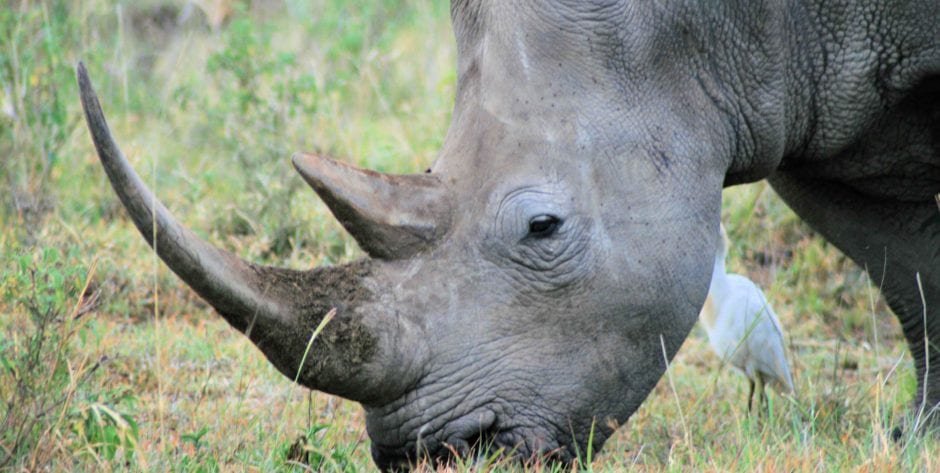

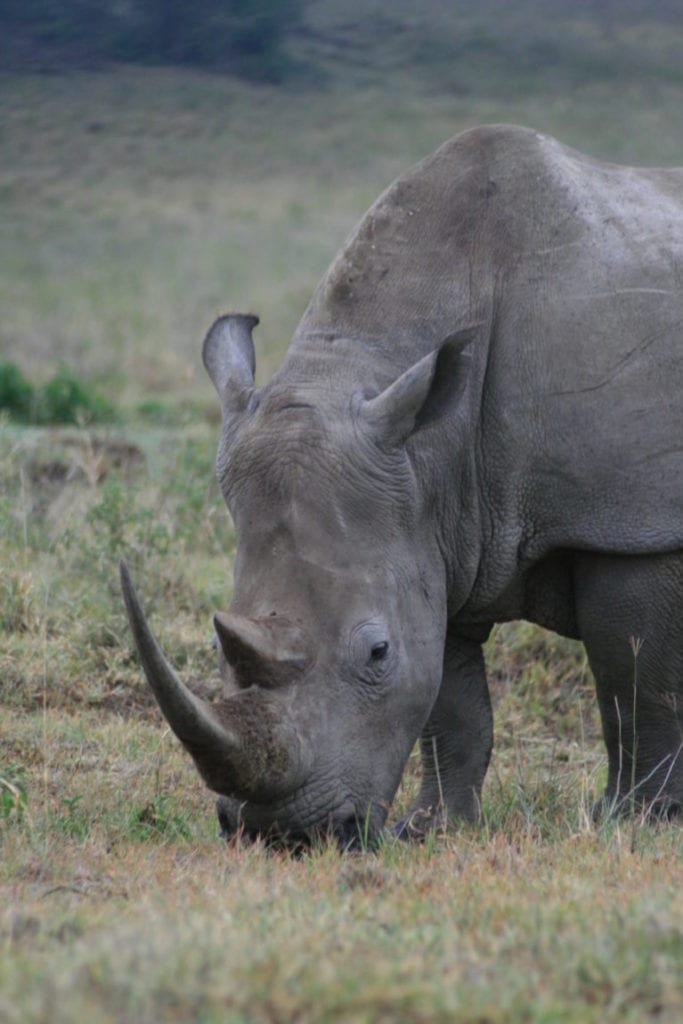

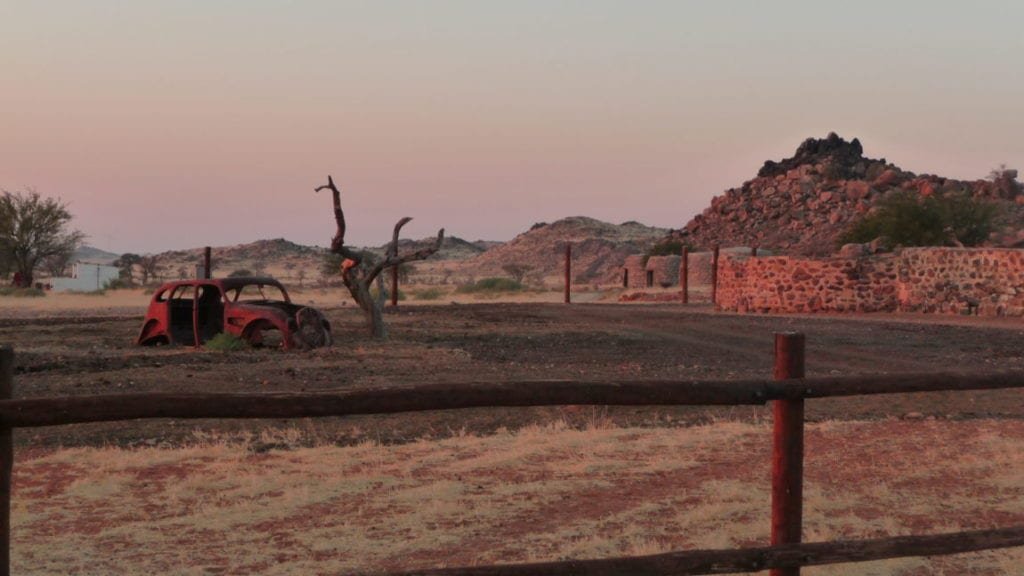




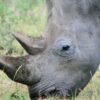
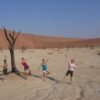
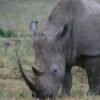
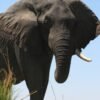
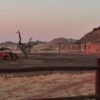
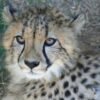
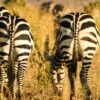
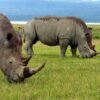
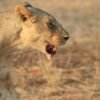
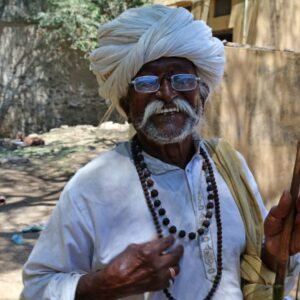

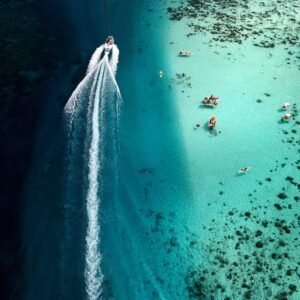
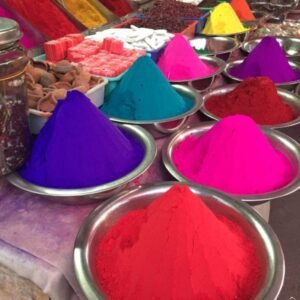
Reviews
There are no reviews yet.